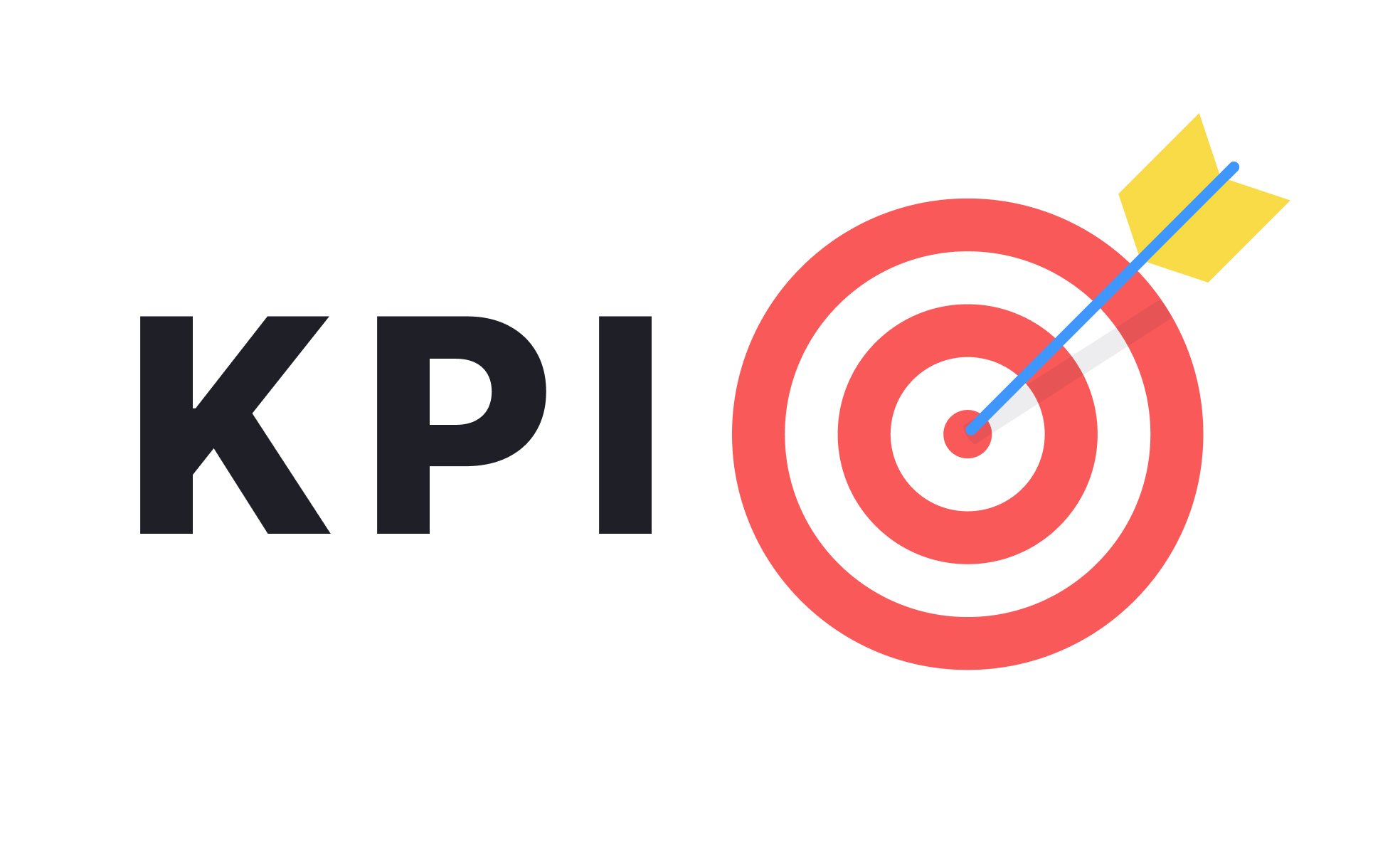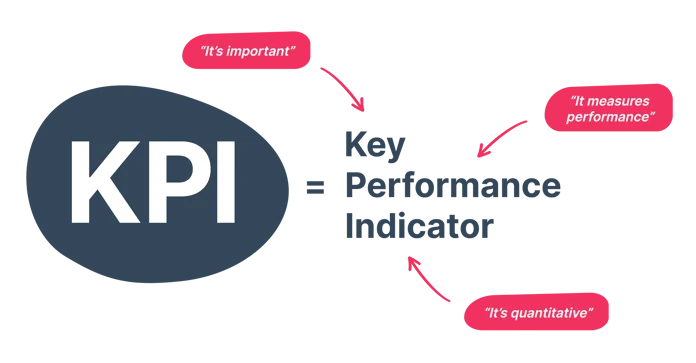
Key Performance Indicators (KPIs) are measurable metrics that organizations use to assess how effectively they are achieving long-term objectives. KPIs track performance toward strategic goals and provide insights into a company’s financial, operational, and customer-oriented results.
Key Performance Indicators, commonly known as KPIs, are measurable metrics that organizations use to assess how effectively they are achieving long-term objectives. They serve as tools to track performance and progress toward strategic goals.
KPIs offer insights into a
company’s strategic, financial, and operational results — particularly when
compared to competitors in the same industry. They are also useful for
evaluating current outcomes against predefined standards or previous
performance records.
Key Points:
· KPIs evaluate a company’s performance in relation to specific targets, strategic goals, or industry benchmarks.
· Financial KPIs might include metrics like net income (also referred to as bottom-line profit), revenue after deducting expenses, or liquidity ratios such as the current ratio.
· Customer-oriented KPIs typically focus on efficiency per customer, customer satisfaction, and loyalty or retention rates.
· Operational or process-driven KPIs are designed to measure and manage internal workflows and performance.
· Most businesses utilize data analytics platforms and reporting tools to track and analyze KPIs on a regular basis.
Why Key Performance Indicators (KPIs) Matter
Key Performance Indicators
(KPIs) are essential tools used in business to evaluate performance and
progress toward clearly defined, measurable goals. They offer business owners
and managers a snapshot of how their company—or a particular area of it—is
functioning at any given time. KPIs can be compared against:
· A predefined benchmark
· Industry competitors
· The business's own historical performance
Also known as Key Success
Indicators (KSIs), KPIs vary across industries and organizations, depending on
strategic priorities. For instance, a software company focused on rapid growth
might prioritize year-over-year (YOY) revenue growth. Meanwhile, a retail chain
may find same-store sales more useful for tracking performance.
Core to KPIs is the process of
data collection, storage, cleansing, and synthesis. KPI data is matched against
pre-set targets, then analyzed to assess whether current processes—or recent
changes—are effectively supporting departmental or organizational goals. This
helps management determine if they should maintain their current approach or
adjust strategies to improve future outcomes.
The primary aim of KPIs is to
deliver clear, concise performance insights to guide strategic decision-making.
KPI tracking is typically done using analytics tools and reporting software.
KPI Levels in a Business
· Company Level: These KPIs give a high-level view of overall business health and performance. While they provide important context, they are often too broad for making detailed decisions. They help initiate deeper analysis within departments.
· Department Level: These are more focused and help explain why certain company-wide KPIs look the way they do. For example, if total revenue has dropped, analyzing conversion rates or customer satisfaction in specific departments can provide insights.
· Project/Sub-Department Level: These KPIs zoom in even further, often requiring detailed data not readily available. Management might request this level of analysis when assessing new initiatives—like testing a product with a specific user group.
How to Set Key Performance Indicators (KPIs)
To be effective, Key Performance Indicators
(KPIs) must align with the specific goals and desired outcomes of an
organization. KPIs shouldn’t be generic—they should reflect the unique nature
of the business. Here are key steps to consider when setting KPIs:
1. Set Clear Objectives
KPIs should be directly tied to essential
business goals that influence the organization’s success—whether those goals
are financial, customer-focused, marketing-related, or operational. Clearly
define what success looks like and how it will be measured. Without clear
objectives and measurement criteria, an organization risks wasting time and
resources on outcomes that don’t support strategic growth.
2. Communicate the KPIs
Employees need to be aware of and understand
the KPIs. Sharing them across teams and departments ensures alignment and
commitment. Explain the importance of each KPI, how they connect to broader
goals, and what steps will be taken to reach them. Staff input can provide
valuable perspectives and help refine targets to ensure relevance and feasibility.
3. Review and Adjust KPIs
KPIs are not set in stone. Regular evaluation
is essential to ensure they remain relevant as business conditions evolve.
Markets shift, priorities change, and new challenges emerge. Reviewing KPIs
allows organizations to make necessary adjustments and stay on course toward
achieving meaningful outcomes.
Types of KPIs
KPIs typically fall into four broad
categories, each with distinct characteristics, timeframes, and usage within an
organization. Different KPIs may be applied by various departments within the
same company.
1. Strategic KPIs
Strategic KPIs are generally the most
high-level indicators. They provide a broad view of how a company is
performing, though they may not offer detailed insights beyond a high-level
snapshot. Executives commonly use strategic KPIs, and examples include return
on investment, profit margin, and total company revenue.
2. Operational KPIs
Operational KPIs focus on short timeframes,
often measuring how the company performs on a month-to-month or even day-to-day
basis. These KPIs analyze specific processes, segments, or geographic regions.
Operational KPIs are used by managers to explore the underlying factors of
strategic KPIs. For instance, if a company-wide revenue drop is observed,
managers might analyze specific product lines to understand the issue.
3. Functional KPIs
Functional KPIs are department-specific and
track performance within particular functions. For example, a finance
department might monitor how many new vendors are registered in their system,
while a marketing team might measure how many clicks their emails generate.
Functional KPIs can be either strategic or operational but are tailored to
serve the specific needs of a given department.
4. Leading/Lagging KPIs
Leading and lagging KPIs reflect the nature
of the data and whether they indicate future changes or past events. Leading
KPIs forecast changes that are expected, while lagging KPIs reflect changes
that have already occurred. For example, the number of overtime hours worked
could be a leading KPI if it signals a decline in product quality, whereas
profit margins are lagging KPIs, as they reflect past operational results.
Frequently Used KPIs
Financial Metrics
Key performance indicators that relate to
financial performance typically emphasize revenue and profit margins. Net
profit, which is a fundamental measure of profit, indicates the amount of
revenue that remains after subtracting all the company’s expenses, taxes, and
interest payments for a particular period.
These financial metrics are usually derived
from a company’s financial reports. However, management may find it more
beneficial to analyze specific numbers that address particular issues or
aspects of the company they want to explore. For example, a company might use
variable costing to adjust account balances for internal analysis.
Examples of financial KPIs include:
· Liquidity ratios: KPIs that assess how effectively a company can manage its short-term debt obligations with its short-term assets. These are also called current ratios, calculated by dividing current assets by current liabilities.
· Profitability ratios: KPIs that evaluate how efficiently a company generates sales while keeping expenses low. An example is the net profit margin.
· Solvency ratios: KPIs that assess the long-term financial stability of a company by measuring how well it can cover long-term debt. An example is the total debt-to-total-assets ratio.
· Turnover ratios: KPIs that measure the speed at which a company completes a specific task. For example, inventory turnover measures how quickly a company converts inventory into sales.
Customer Experience Metrics
Customer-focused KPIs usually focus on
customer efficiency, satisfaction, and retention. These metrics are used by
customer service teams to assess the quality of service customers are
receiving.
Examples of customer metrics include:
· Number of new ticket requests: This counts customer service requests and measures how many new and unresolved issues customers are facing.
· Number of resolved tickets: This tracks how many requests have been successfully handled. By comparing the number of requests to the number of resolutions, a company can assess how well it is managing customer requests.
· Average resolution time: The average time taken to resolve a customer’s issue. Companies may choose to segment this by different types of requests, such as technical issues or new account inquiries.
· Average response time: The average time it takes for a customer service representative to first connect with a customer after the request has been submitted.
Process Performance Metrics
Process metrics are designed to assess
operational performance across the organization, helping identify areas where
improvements are needed in processes, quality, or overall performance.
These metrics are especially valuable for
companies with repetitive tasks, such as manufacturing or companies in cyclical
industries. Examples of process performance metrics include:
· Production efficiency: Often measured as the production time for each stage divided by the total processing time. For example, if it takes only 2% of the total time to solicit raw materials, but it is found to take 5%, the company can address this inefficiency.
· Total cycle time: The total time it takes to complete a process from start to finish. This may be analyzed as average cycle time if management wants to assess performance over a longer period.
· Throughput: The number of units produced divided by the time taken to produce them, indicating the speed of the manufacturing process.
· Error rate: The ratio of errors to the total number of units produced. Companies focused on minimizing waste can use this metric to track how many items fail quality control tests.
Marketing Metrics
Marketing KPIs are used to assess the
effectiveness of marketing campaigns and promotional efforts, often focusing on
conversion rates, or how often potential customers take specific actions in
response to marketing efforts.
Examples of marketing KPIs include:
· Website traffic: This metric tracks the number of visitors to specific pages on a company’s website. Management can use this to understand whether online traffic is successfully guiding potential customers toward a sale.
· Social media traffic: This tracks interactions such as views, likes, shares, and comments on the company’s social media profiles.
· Conversion rate on call-to-action content: This measures how well promotional content converts customers into action, such as making a purchase during a sale. Companies can calculate this by dividing the number of successful actions by the total number of content distributions.
· Click-through rates: This measures the number of clicks on links within emails, tracking how many customers opened an email, clicked a link, and completed a sale.
IT Metrics
Every department in a company has room for
improvement to enhance efficiency and employee satisfaction, including the IT
department. KPIs in this area can help assess whether the IT team has enough
resources. Here are some examples:
· Total system downtime: This refers to the total time systems are offline for updates or maintenance. During this downtime, customers may not be able to place orders, and employees may be unable to perform certain tasks, affecting operational flow and customer service.
· Number of tickets/resolutions: This measures how many internal staff requests, such as software issues, hardware problems, or network failures, are successfully resolved. It's similar to KPIs in customer service.
· Number of developed features: This KPI tracks the number of changes or new features added to internal software or systems, reflecting the company’s internal product development efforts.
· Critical bug count: This counts the number of severe issues in systems or applications. The company must define what constitutes a major or minor bug for consistency.
· Backup frequency: This measures how often critical data is copied and stored securely. Companies may have different backup goals based on record-keeping policies and requirements.
Sales Metrics
A company’s ultimate objective is to generate
revenue, and while financial KPIs track this, sales KPIs dive deeper, using
non-financial data to better understand the sales cycle. Some examples are:
· Customer Lifetime Value (CLV): This metric reflects the total projected amount a customer will spend on the company’s products during their entire relationship.
· Customer Acquisition Cost (CAC): This tracks the total expenses spent on sales and marketing to acquire a new customer. Comparing CAC with CLV helps businesses assess their acquisition efforts' efficiency.
· Average value of new contracts: This represents the average size of new deals. Companies may target a specific value range for new agreements, aiming to secure either larger or smaller clients.
· Average conversion time: The duration it takes from the initial contact with a potential client to closing the deal with a signed contract.
· Number of engaged leads: This counts how many potential clients have been reached. The metric can be broken down by engagement methods such as calls, emails, meetings, or other contact methods.
Quick Tip
KPIs are often tied to bonuses. Salespeople’s
commissions may depend on hitting specific conversion rates or engaging a
certain number of leads.
Human Resources and Staffing Metrics
Companies may also track KPIs related to
their employees, such as turnover, retention, and satisfaction. Organizations
typically have extensive data about their workforce. Below are some examples:
· Absenteeism rate: This measures the number of missed shifts or sick days taken by employees. It can highlight disengaged or unsatisfied employees and help plan for seasonal staffing variations when sickness is more likely.
· Overtime hours worked: This tracks how many overtime hours employees work, helping to identify potential burnout issues or if staffing levels are adequate.
· Employee satisfaction: This gauges how employees feel about different aspects of their work environment, usually through surveys. Repeating the same questions yearly can help track changes in satisfaction over time.
· Employee turnover rate: This indicates how often employees leave the company and how quickly. Companies can break this down by department or team to understand the reasons behind higher turnover rates in certain areas.
· Number of applicants: This tracks how many applications are received for job openings. This KPI helps assess if job postings are effectively reaching a broad audience and attracting qualified candidates.
How to Create a KPI Report
With the vast amount of data collected by
companies, it can be challenging to identify which KPIs are truly useful and
impactful for decision-making. When preparing KPI dashboards or reports,
consider the following steps:
· Define your goals and intentions. KPIs are only valuable when they are tied to clear objectives. Before generating any reports, set specific goals and then choose the KPIs that directly support those goals.
· Set SMART KPI requirements. KPIs that are vague, hard to measure, or unrealistic offer little value. Focus on available data and ensure your KPIs follow the SMART criteria: Specific, Measurable, Attainable, Realistic, and Time-bound.
· Stay flexible. As you compile KPI reports, new business challenges may arise or attention may need to shift to other areas. Since business environments and customer needs change, KPIs should also evolve—adjust metrics, targets, and strategies accordingly.
· Don’t overwhelm your audience. It might be tempting to include as many KPIs as possible, but too much data can be confusing. Overloaded reports make it difficult to focus on what truly matters. If needed, create separate reports for different objectives or areas.
💡 Tip:
Start with high-level data (e.g., company-wide revenue), then drill down into more specific segments (e.g., revenue by department or by product).
Benefits of Using KPIs
There are several
reasons why a company may benefit from analyzing KPIs:
· Promote actionable goal-setting. Tracking KPIs requires clear targets. This process encourages businesses to set focused, achievable goals and build systems that actively support those goals.
· Data-driven decision-making. KPIs highlight specific issues and help find evidence-based solutions. This quantitative approach supports strategic planning and operational excellence.
· Improve accountability. KPIs make performance evaluation more objective. Instead of relying on personal judgment, KPIs provide data-backed assessments. They can also motivate employees by showing that their performance is being monitored.
· Track progress. KPIs connect strategic goals with day-to-day operations. Without tracking progress, goals lose meaning. KPIs provide a framework to set, measure, and adjust goals as needed.
Limitations of Key Performance Indicators
(KPIs)
While KPIs are
valuable tools, there are some drawbacks to
keep in mind:
· Time-consuming: It can take a long period before KPIs yield meaningful insights. For instance, a company might need to collect annual employee data over several years to identify clear trends in satisfaction levels.
· Require ongoing monitoring: For KPIs to be effective, they must be regularly tracked and reviewed. A report that is prepared but never analyzed offers no benefit. Additionally, if KPIs are not frequently checked for accuracy and relevance, they may lead to poor decision-making.
· Vulnerable to manipulation: KPIs can sometimes be "gamed" by managers. Rather than focusing on truly improving outcomes, some may instead focus on boosting KPI results—especially if performance bonuses are tied to them.
· Risk of misaligned incentives: If leadership prioritizes KPI numbers over real results, quality may decline. Managers may fixate on productivity metrics, while employees may feel excessive pressure to meet targets that aren’t always reasonable or fair.
Pros:
· Promote actionable goals
· Enable data-driven decision-making
· Increase accountability
· Allow measurement of progress
Cons:
· Require significant time investment
· Demand regular follow-up
· Can be manipulated
· Risk of setting the wrong incentives













